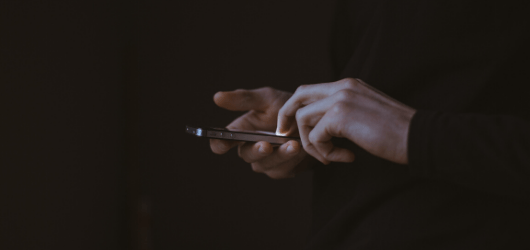One of the main selling points of the iPhone is that it is easy to use. However, many iPhone users often have trouble taking a screenshot. The good news is that it is not only possible, but also easy when you know how to go about it.
However, the process varies between the various versions of the iPhone. Fortunately, this comprehensive guide will cover all bases and offer hidden tips and tricks to make it all the more easier for you.
How to Take Screenshots Using Buttons
Taking a screenshot using your iPhone’s buttons is easy and quick. However, the process varies depending on the version of your iPhone and the positioning of the buttons. Following is a step-by-step guide on how to go about it:
1. Locate and Identify the Necessary Buttons
The buttons necessary to take a screenshot on most iPhones are the ‘Home’ and ’Lock’ buttons. These are the only other physical buttons on your phone, besides the ‘Volume Up’ and ‘Volume Down’ buttons, so they should be easy to locate.
The home button occupies a central position on every iPhone version before the iPhone X – it is the only button on the device’s front screen, right in the bottom center of your iPhone. The lock button, however, does not occupy a fixed position. iPhone versions 6 and newer have the lock button located on the top right-hand-side corner, while older versions have it installed on the top.
For iPhone models featuring the home button, press the lock and home buttons simultaneously to take the screenshot. For newer versions, press the lock and volume up buttons simultaneously to take a screenshot on any iPhone X Series (including the iPhone X iPhone XS, iPhone XS Max, and iPhone XR).
2. Time Your Screenshot Well
Timing is crucial when taking a screenshot using the iPhone’s physical buttons. As mentioned earlier, you should press and release both buttons simultaneously (remember which buttons to press, depending on the version of your iPhone). Pressing either button one split-second too early or too late will initiate other processes, including locking your iPhone, reverting back to the home screen, or raising the device’s volume.
3. Save, Edit, and Share the Screenshot
So, how do you know whether you have succeeded in taking a screenshot on your iPhone? There are two indications. First, you should see your phone’s screen turn white for a split second. Second, you should hear a shuttering sound (like the sound made by a manual camera’s lens) as the white screen appears and disappears.
Saving your screenshot is also easy and quick. Simply locate a thumbnail that is supposed to appear at the bottom-left corner of your phone’s screen once the white screen disappears. You can let the thumbnail fade away, in which case the screenshot will be saved automatically, or you can tap it to open and save under another name or edit. You can also share the screenshot via any messaging app (Facebook, Twitter, email, and more) on your iPhone by opening the image on your photos app and tapping on the bottom-left corner to open sharing options.
How to Take Screenshots Using AssistiveTouch
If the physical button route proves too cumbersome for you, you always have the alternative of AssistiveTouch. AssistiveTouch is one of Apple’s technologies designed to make operating the iPhone easier. It launches a simple menu that essentially offers access to all of the phone’s features. One of the features in enables is taking screenshots the digital way.
Taking screenshots using AssistiveTouch is a process, but it is quick and simple. Here is a step-by-step guide on how to go about it:
1. Turn On the AssistiveTouch Feature
AssistiveTouch is designed to simplify accessibility, so you should navigate to your settings by following this path: Settings>General> Accessibility. You will see the AssistiveTouch feature on the list of options under this section. Tap on the feature and choose to turn it on. You will tell when the AssistiveTouch feature turns on when a grayish, translucent box displaying a variety of icons appears on the screen.
2. Find the Screenshot Feature
The faded box mentioned above is your portal to the screenshot feature. Look for an icon of your iPhone; you can find it on the right-hand-side of your menu. Tap on the icon to get access to a variety of your iPhone’s features, including ability to rotate the screen, lock it, and take screenshots. You will find the screenshot option alongside other control options; tap on the option to take your screenshot.
Your iPhone’s screen will turn white briefly and a thumbnail of your screenshot will appear at the bottom-right corner. This is how you know that you have succeeded.
3. Save, Edit, and Share Your Screenshot
Your screenshot will save automatically when the thumb nail appears at the bottom of the screen, as mentioned. You can then tap on the thumbnail to open and edit the screenshot. You can also share the screenshot via your messaging apps by tapping on the bottom-left corner to reveal your options.
P.S. It takes a bit longer to take a screenshot using the AssistiveTouch feature compared to the physical button route. It is also advisable to turn the AssistiveTouch feature off once you are done as leaving it on may lead to unchecked access to your iPhone’s features.
Bonus Tip: Let Siri Help!
Siri is not programmed to take screenshots; at least not yet. However, your iPhone’s assistant can still guide you through the process step-by-step, based on the exact version of your iPhone. The assistant will not activate the screenshot settings, but it will offer suggestions on how to go about it the easiest way it can. Siri may also get an upgrade to execute this command, hopefully with the next updates.
You’re Done!
Taking a screenshot on your iPhone is that easy, and it only gets easier and quicker the more you do it. Give it a try, and if you choose to use the buttons be sure to press the right ones. Remember to ask Siri for some guidance if you get stuck!







Add comment